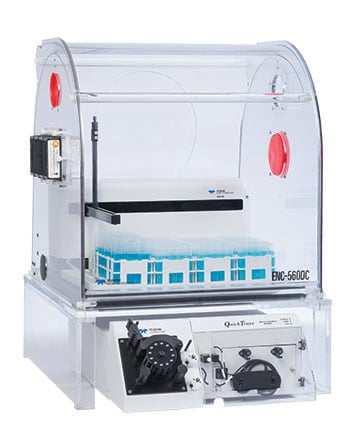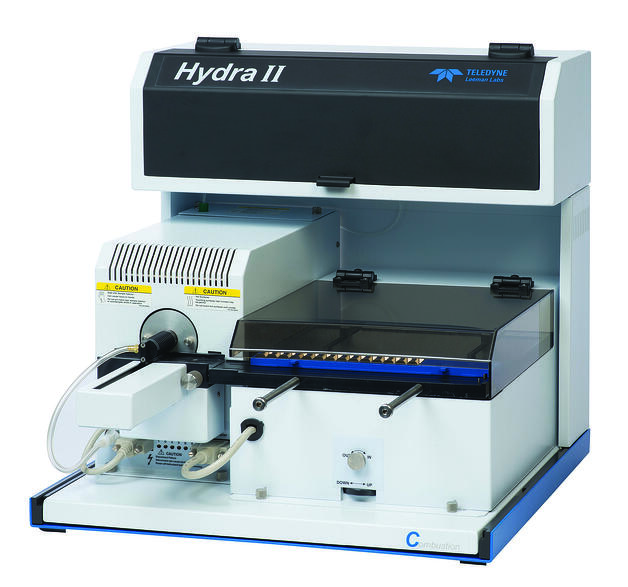 Teledyne Leeman Labs offers a family of fully automated mercury analyzers that address the analysis of solids, semi-solids and liquids. Our high performance instruments help lab technicians, chemists and lab managers to complete the myriad of task required in today’s modern laboratories.
Teledyne Leeman Labs offers a family of fully automated mercury analyzers that address the analysis of solids, semi-solids and liquids. Our high performance instruments help lab technicians, chemists and lab managers to complete the myriad of task required in today’s modern laboratories.
We recently released a Practical Guide for Selecting the Best Technique for Mercury Measurement where we describe in detail each of our mercury analyzers and how they work. In a previous post, we covered our two CVAAS systems. Below is a summary of the information included in the guide about Leeman Lab’s Cold Vapor Atomic Fluorescence Spectroscopy and Direct Analysis Combustion systems. The complete guide can be downloaded at TeledyneLeemanLabs.com.
QuickTrace® M-8000 CVAF Mercury Analysis System
The QuickTrace® M-8000 is a mercury analyzer based on the US EPA method 1631, which supports water quality monitoring programs under the Clean Water Act (CWA); and the US EPA method 245.7, which was developed to satisfy the lower detection limits required by amendments (2007) to the CWA. These methods enable labs to measure mercury to lower levels with less time and effort.
The M-8000 system is a valve-based atomic fluorescence mercury analyzer that allows for determination of total mercury with or without pre-concentration of the sample by amalgamation on either one or two gold traps. An acidified digested aqueous sample from the autosampler is introduced, via peristaltic pump, as Hg2+ dissolved in solution. An optional Hydroxylamine Hydrochloride (NH2OH HCL) addition to the sample stream occurs at the first mixing tee. Simultaneously, a reducing agent (10% SnCl2 in 7% HCl) is introduced via a parallel pump channel and is mixed with the sample stream at the second mixing tee.
The liquid mix then enters the liquid mix tube. Stannous Chloride (Sn2+) reduces Hg2+ in solution to Hg0 while the mixture is en route to the Gas Liquid Separator (GLS). At this stage (prior to the GLS) the analyte is present as a finely dispersed emulsion of liquid (metallic) Hg0 micro-droplets, in excess SnCl2 solution medium. The finely dispersed Hg0/SnCl2 emulsion is introduced into the top of the GLS. The Hg0/SnCl2 emulsion flows over the frosted GLS center post in a thin film, covering the entire post from top to bottom. A carrier gas simultaneously enters the bottom of the GLS tangentially. The carrier gas swirls around the wetted center post and upwards toward the GLS gas exhaust port.
For more details about how the QuickTrace® M-8000 works beyond this stage, review Teledyne’s new Practical Guide for Selecting the Best Technique for Mercury Measurement.
Hydra IIC Direct Analysis Combustion Mercury Analysis System
 The Hydra IIC is based on US EPA method 7473, which is used to measure the total organic and inorganic mercury in soils, sediments, bottom deposits and sludge-type materials. Mercury levels in aqueous wastes and ground waters can be determined without sample chemical pretreatment using this method. The Hydra IIC is also based on the test method ASTM 6722, which covers procedures that determine the total mercury content in a sample of coal or coal combustion residue.
The Hydra IIC is based on US EPA method 7473, which is used to measure the total organic and inorganic mercury in soils, sediments, bottom deposits and sludge-type materials. Mercury levels in aqueous wastes and ground waters can be determined without sample chemical pretreatment using this method. The Hydra IIC is also based on the test method ASTM 6722, which covers procedures that determine the total mercury content in a sample of coal or coal combustion residue.
The System requires no sample digestion, and employs a gold trap for pre- concentration of the sample. Through proper selection of the Hydra IIC’s operational parameters (furnace/catalyst temperature and time, gas flows, etc.), accurate analysis can be performed across a dynamic range of 0.001 ng to 1500 ng. By quickly changing the analyzer’s modules it can be converted to a liquid sample CVAAS analyzer.
The Hydra IIc employs combustion (decomposition) of a sample at high temperatures with oxygen (or air). A weighed sample is introduced to a decomposition furnace with oxygen (or air) flowing over the sample itself. The furnace temperature is then raised in two stages to first dry the sample, then to combust or decompose the sample.
The gases resulting from the decomposition are carried through a catalyst furnace to remove halogens, nitrogen oxides, and sulfur oxides. The remaining combustion products, including elemental mercury (Hg0), are swept through a Nafion® dryer and then to a gold trap that captures the mercury while letting the other gases pass through. The gold trap is then heated to release the Hg0 into a carrier gas, which transports it to the spectrometer.
For more details about how the Hydra IIC works beyond this stage, review Teledyne’s new Practical Guide for Selecting the Best Technique for Mercury Measurement.

